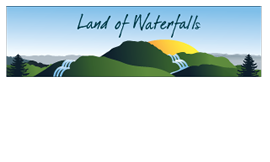Fall is harvest time. Since the first settlers came to the area in the late 1700s agriculture has played a major role in the local economy. Early families grew their own food and crops for their livestock. They also took any extra crops and livestock to markets in Asheville or Greenville each fall for much needed cash. The income allowed them to buy goods they couldn’t grow or make, as well as additional land and to pay taxes.
They chiefly raised hogs, along with cattle and sheep (mainly for the wool), as well as chickens. Corn was the leading crop, along with beans, pumpkins, winter squash, cabbage, potatoes, oats and rye.
Throughout the 1800s agriculture grew steadily and continued to be the chief source of income in Transylvania County. There were 365 farms in 1870, 734 in 1880 and just over 1000 by 1900. The farms also grow in total acreage over the years.
The 20th century began with a shift in the local economy—many were working in the logging and lumber industry and by 1940 manufacturing jobs lured others away from farming full-time. Real estate prices in Brevard were relatively high but farm owners couldn’t sell their property for enough to entice them to sell and move to town so most continued to farm on a small scale.
Agriculture in the county was also changing. Dairy farming expanded from the 1940s through the 1960s. In the 1950s and 60s the nursery business blossomed—with gladiolas, ornamental shrubs and trees, and Christmas trees being leading products. By 1982 the top grossing farm product in Transylvania County was trout.
Today agricultural remains important but the type of farming has changed. 2017 statistics list 215 farms in the county. They are smaller, at an average size of 68 acres and the products have changed again. The leading crops are those that sell at farmers market and roadside stands—vegetables, fruit, berries, melons and flowers. Greenhouse and nursery products, such as ornamental plants, shrubs, trees, Christmas trees are also grown throughout the county. The leading livestock product is aquaculture—trout farms and fish hatcheries; followed by beef, sheep, goats, poultry and eggs.
Photographs and information for this column are provided by the Rowell Bosse North Carolina Room, Transylvania County Library. For more information, comments, or suggestions contact NCRoom staff at [email protected] or 828-884-1820.




